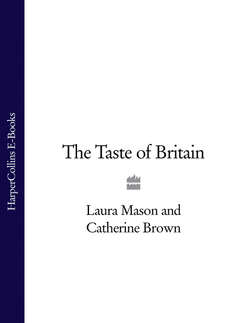Читать книгу The Taste of Britain - Hugh Fearnley-Whittingstall - Страница 144
HISTORY:
ОглавлениеCassell’s Dictionary of Cookery (1875) defines Devonshire buns as ordinary bun dough using cream instead of milk. The result would have been a soft, light, yet rich dough. The use of split to describe a bun or roll that has been split to receive jam, cream or filling is first recorded in 1905 (OED). The reason why these buns carried the alternative name of Chudleighs is unknown. The fact that this small market town in Devonshire was visited by a catastrophic fire in 1807 that started in a bakehouse in Mill Lane is doubtless coincidental. The first reference to this name is in the collections made by Florence White as founder of the English Folk Cookery Association during the 1920s. Here, it is suggested that Chudleighs be rubbed over with butter paper for a gloss, and wrapped in a warm cloth after baking, which gave a soft crust - something found also for Scottish baps. The second record is also in White (1932). White’s recipes did not call for cream, only for milk. She also notes the existence of Cornish splits (which were the same but larger) and the alternative name (in Devon and east Cornwall) of tuffs.
The popularity of these buns is reinforced by the tourist industry and the vast quantity of Devon or Cornish cream teas that are served each summer (clotted cream, of course). Most of these may come today with scones, but there are sufficient to keep the Chudleigh living.
